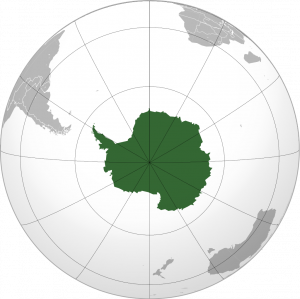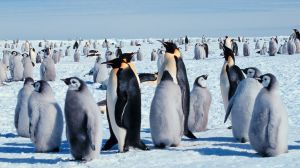Antarctica
Antarctica is Earth's southern-most continent. It contains the geographic "South Pole," and is surrounded by the Southern Ocean.
Measuring 14,200,000 square kilometers (5,500,000 square miles), it is the fifth-largest continent, nearly twice the size of Australia.
Antarctica, on average, is the coldest, driest, and windiest continent, and has the highest average elevation of all the continents. About 98% of Antarctica is covered by ice, which averages 1.9 km (1.2 mi; 6,200 ft) in thickness, which extends to all but the northernmost reaches of the Antarctic Peninsula. Most of Antarctica is a polar desert, with annual precipitation of 200 mm (8 in) along the coast and far less inland.
Antarctica was the last region on Earth to be discovered by its people. The continent remained largely neglected for the 19th century, due to its harsh environment, lack of easily accessible resources, and isolation.
Organisms native to Antarctica include many types of algae, bacteria, fungi, plants, protista, and certain animals, such as mites, nematodes, penguins, seals and tardigrades.
Vegetation, where it occurs, is tundra. As far as humanoids go, Antarctica has no indigenous population.

